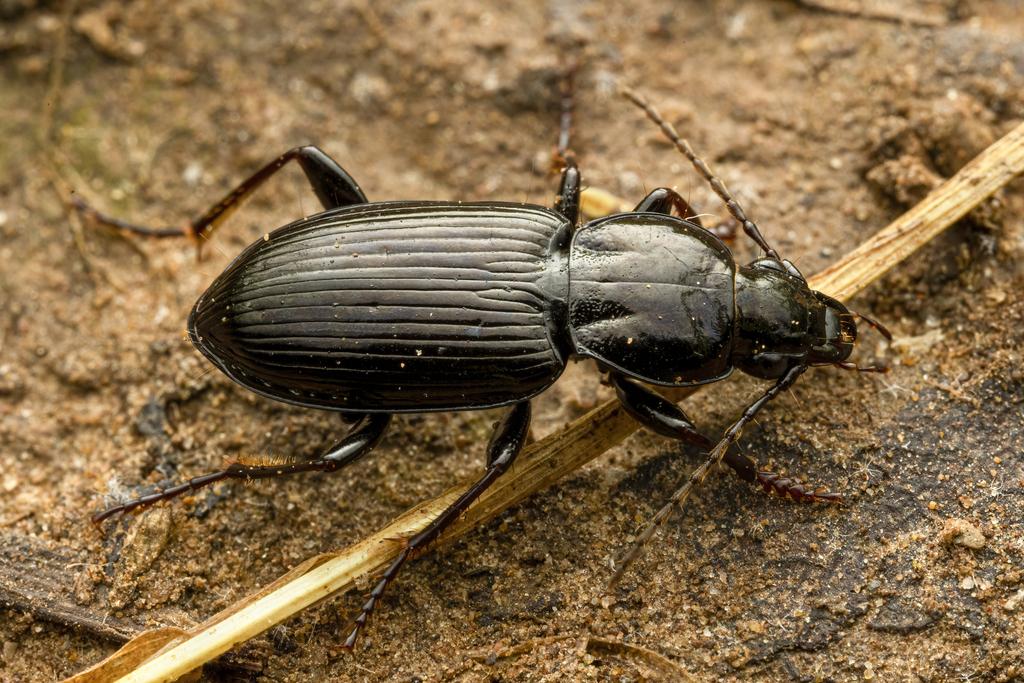About predatory beetles
-
Whether it’s the rove beetle, looking like it lost half its wings, or soldier beetles in their leathery “jackets,” tiger beetles dressed in iridescent finery, or caterpillar hunters sporting racing colors, this group of beetles may appear to dress like dandies, but they’re worth their weight in gold in your garden.
-
General predators of any insect they can catch, these beetles may be seen cruising about plants or dashing over the ground, swiftly chasing down their hapless meals.
-
These medium to large beetles may be active day or night and can eat their body weight in food daily.
-
Larvae are also predaceous, hunting actively either at the ground surface or lunging up out of shallow tunnels in the soil to ambush their prey.
-
Predatory beetles may overwinter as adults or as larvae in the soil and can live up to 4 years.
-
Both adults and larvae may bite if handled, so be forewarned!
Important species in Maryland: Rove beetles, soldier beetles (leatherwings), and two types of ground-dwelling beetles: tiger beetles (Six-spotted tiger beetle), and ground beetles (carabids) including caterpillar hunters (Calosoma spp.)

Six-spotted tiger beetle. Photo: David Cappaert, Bugwood.org

Goldenrod solider beetle (Chauliognathus pensylvanicus). Photo: Susan Ellis, Bugwood.org
Life Stage(s) that feed on pests: Larvae and adults. Soldier beetle adults also feed on pollen and nectar.
Insect(s) upon which they feed: Soft-bodied insects, and the eggs and larvae of pests such as aphids, mites, mealybugs, caterpillars, grubs, fly maggots and pupae, root maggot larvae in the soil, and other small soil dwellers such as snails and slugs.
Contributors: Mike Raupp, Jon Traunfeld, and Chris Sargent
